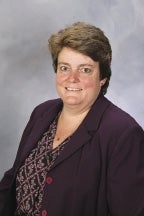With little fanfare, Sturbridge selectmen voted last month to return to a tax policy that charges owners of business property the same rate as homeowners.
Mary Blanchard, chairwoman of the Board of Selectmen, said the board faced no opposition from residents before the 3-1 vote.
“We only hear from people when they get their tax bills,” she said.
The assessor’s office has begun fielding those phone calls, with the first tax bills for fiscal year 2015 due next week. But Blanchard said the change was necessary to make taxes equitable.
Sturbridge had been gradually shifting more of the tax burden away from business owners in recent years after selectmen enacted dual tax rates in 2004 to provide relief to homeowners. The town assessor had, in the last few years, suggested selectmen support a return to a single rate. Until this year, efforts were narrowly defeated.
Blanchard, who had supported a single rate in past years, said more members were compelled to do the same this year based on a presentation by incoming assessor Ann Murphy. In a tax classification hearing, Murphy illustrated how sticking with two rates — one for residential property and a higher rate for commercial and industrial property — would cause bills to owners of business property to climb hundreds of dollars in fiscal 2015. For example, if selectmen had enacted a dual rate again for the 2015 fiscal year, Murphy told them the tax bill on a commercial property valued at $250,000 would rise $240, while the bill for a residential property of the same value would drop $55.
“It’s quite a disparity,” Blanchard said.
By enacting a single rate, Sturbridge joins the large majority of Massachusetts communities. Alexandra McNitt, executive director of the Central Massachusetts South Chamber of Commerce in Sturbridge, said communities that employ dual tax rates are at a disadvantage in attracting new business.
“A split tax rate does send a signal that a community is less interested in their business sector than in their residents. And the business sector is contributing heavily to that same tax base,” McNitt said.
While reverting to a single rate proved fairly painless for Sturbridge, a quiet town of fewer than 10,000 residents, it’s not an easy sell everywhere. Marcus DiNatale, a Fitchburg city councilor, has been chipping away at his city’s dual rate for years.
Rather than convert to a single rate in one year, DiNatale said, Fitchburg must do it gradually to prevent a huge spike in residential tax bills. But he wants the City Council to be more aggressive in pursuing one rate.
This fall, DiNatale filed a resolution asking his fellow councilors to support a 2-percent decrease in the split rate annually until Fitchburg arrives at one rate. That would take 12 years, he said. The resolution was passed 8-3, but it’s non-binding. Given that council membership changes every couple of years, DiNatale recognized it will be a challenge to maintain support long term.
“It would take political courage,” said DiNatale, noting that some councilors are resisting the plan because it’s not popular among homeowners.
To DiNatale, it’s worth the risk. He views Fitchburg’s dual rate as one of three major hindrances to economic development in the former mill city, which has struggled with high unemployment as its once-strong manufacturing base has eroded in recent decades. High electricity rates and the lack of a comprehensive plan that showcases land available for commercial and industrial use compound the issue, DiNatale said.
Neighboring single-rate communities, such as Leominster, are much more attractive to businesses looking to buy property, DiNatale said. He said it could cost a company several thousand more dollars to own property in Fitchburg than in neighboring towns, thanks to the dual rate. And that hurts residents, who would see their tax burden lessen if more businesses were to locate in the city, according to DiNatale.
“(The dual tax rate) has failed the residents. It was supposed to keep resident taxes low and it has not done that,” DiNatale said.
But a dual rate does not doom a community to failure. Marlborough is a prime example of one that has succeeded recently despite its dual rate. Tim Cummings, executive director of the Marlborough Economic Development Corp., said in an e-mail that there are several factors when a business seeks a new location. He said amenities, utility costs, and road infrastructure are also major considerations, and it’s up to local officials to emphasize the selling points.
“A community needs to understand its market and what its strengths and weaknesses may be. Obviously, in a free-market system, you always want to be competitive, but knowing what is valuable to a typical buyer … is extremely important,” Cummings wrote.
Worcester, meamwhile, has a dual tax rate that’s seen as burdensome to business, although the City Council narrowed the gap between commercial and residential tax rates in each of the last two years. The current residential rate is $19.54 per $1,000 assessed valuation, compared with the commercial rate of $30.83. (An annual tax classification hearing to set the rate typically takes place in December.)
But economist Barry Bluestone, director of the Dukakis Center for Urban and Regional Policy at Northeastern University, said data suggest local tax rates don’t usually make or break the local economy.
In 2013, Bluestone published a report following a survey of 240 members of the National Association of Industrial & Office properties, who weighed in on the most important factors in finding new locations. The top three? Parking, rental rates and availability of qualified workers. Property taxes came in ninth.
Another report Bluestone published this summer measured the factors that have made some Bay State industrial cities successful in recent redevelopment efforts while others have struggled. Bluestone found that the availability of city-owned sites ready for commercial development has been key.
“The most important thing that can be done is to find available sites and make them investment ready, and then to market those sites,” he said.

